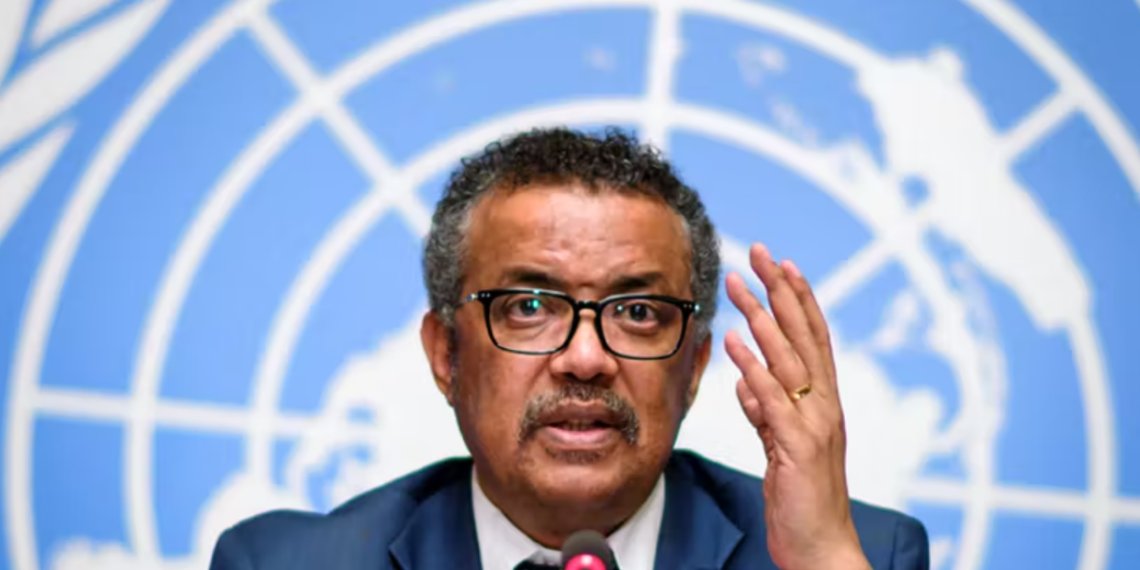by Dr David Bell, Daily Sceptic:

The World Health Organisation (WHO) is currently developing two international legal instruments intended to increase its authority in managing health emergencies, including pandemics:
- Amendments to the 2005 International Health Regulations (IHR), and
- A pandemic treaty, termed ‘CA+’ by WHO.
The draft IHR amendments (analysed in detail here) would lay out new powers for WHO during health emergencies and broaden the context within which they can be used. The draft CA+ (‘treaty’; analysed here) is intended to support the bureaucracy, financing and governance to underpin the expanded IHR.
TRUTH LIVES on at https://sgtreport.tv/
These proposed instruments, as currently drafted, would fundamentally change the relationship between the WHO, its Member States and their populations, promoting what can fairly be described as a fascist and neo-colonialist approach to healthcare and governance. The documents need to be viewed together, and in the wider context of the global/globalist pandemic preparedness agenda.
The exaggerated threat of pandemics
The current rapidly increasing funding for pandemics and health emergencies is based on several fallacies, frequently repeated in white papers and other documents as well as the mainstream media as if they were facts, in particular:
- Pandemics are increasing in frequency;
- Pandemics are causing an increasing health burden;
- Increased contact between humans and wildlife will promote more pandemics (as most are caused by zoonotic viruses).
The last pandemic to cause major mortality was the 1918-19 ’Spanish Flu’, estimated to have killed between 20 and 50 million people. As noted by the National Institutes of Health, most of these people died of secondary bacterial pneumonia, as the outbreak occurred in the pre-antibiotic era. Prior to this time, major pandemics were due to bubonic plague, cholera and typhus, all addressable with modern antibiotics and hygiene, and smallpox, which is now eliminated.
WHO lists just three pandemics in the past century, prior to COVID-19: the influenza outbreaks of 1957-58 and 1968-69 and the 2009 Swine Flu outbreak. The former two killed 1.1 million and 1 million people respectively, while the latter killed 150,000 or fewer. For context, 290,000 to 650,000 people die of influenza every year, and 1.6 million people die of tuberculosis (at a much younger average age).
In Western countries, COVID-19 was associated with deaths at an average age of about 80 years, and global estimates suggest an overall infection mortality rate of about 0.15%, which is similar to that for influenza – though with considerable local variation.
Thus, pandemics in the past century have killed far fewer people and at an older age than most other major infectious diseases.
The COVID-19 event stands out from previous pandemics due to the aggressive and disproportionate responses employed, instituted contrary to existing WHO guidelines. The harms of this response have been discussed extensively elsewhere, with little doubt that the resultant disruptions to health systems and increased poverty will do considerably more harm than any benefit the responses might have achieved. Despite the historical rarity of pandemics, WHO and partners are pushing forward with a rapid process that will ensure repetition of such responses, rather than first analysing the costs and benefits of the recent example. This is clearly reckless and a bad way to develop policy.
The growing role of WHO in public health
The WHO, whilst having a role in coordinating cross-border health emergencies included in its Constitution, was founded on human rights principles and originally emphasised community and individual rights. These culminated in the Declaration of Alma Ata, emphasising the importance of community participation and ‘horizontal’ approaches to care.
Apart from its basis in human rights, this approach has a strong public health basis. Improved life expectancy and major reductions in infectious disease in wealthier populations predominantly occurred through improved living conditions, nutrition and sanitation, with a secondary impact of improving basic health care and availability of and access to antibiotics. Most vaccines came later, though playing an important role in certain diseases such as smallpox. Basic nutrition and living conditions are still the predominant determinant of life expectancy, with GDP recognised as directly impacting infant mortality in particular in lower income countries.
The emphasis of WHO has changed over the past few decades, associated with two major shifts in funding. Firstly, a large proportion of funding now comes from private and corporate sources, rather than being almost solely country-based at its inception. Secondly, most funding is now ‘specified’, meaning it is given to WHO for specific projects in designated geographies, rather than being used at WHO’s discretion to address the greatest disease burdens. This is reflected in an apparent move from priorities based on disease burden to priorities based on commodities, particularly vaccines, that generate profit for their private and corporate sponsors.
In parallel, other ‘public-private partnerships’ have arisen, including Gavi, the vaccine alliance, and CEPI (dedicated solely to pandemics). These organisations include private interests on their governing boards and address a narrow health focus that reflects the priorities of private sponsors. They influence WHO through direct funding and through funding within WHO Member States.



